The People of Hitachi: "Bringing Change to Society via the World of the Ultra-Microscopic" as the Challenge of a Researcher
Lighting Up a Nebuta Float at Night with Renewable Energy: Contributing to the Development and Tradition of Floats While Considering the Environment
The Aomori Nebuta Festival is a summer festival that lights up the Tohoku region, Hitachi has participated in the festival for over 50 years. This year Hitachi's nebuta (float) was lit by solar-powered energy. This was the first time that Hitachi entered a solar-powered float in the historic Aomori Nebuta Festival. This article covers Hitachi’s challenge of realizing a solar-powered float.
Aomori Nebuta Festival Held After a Three-year Absence
“Rassera, rassera, rasse, rasse, rassera,” a distinctive call for spectators, is shouted by the gairyukai, which is Hitachi Nebuta team’s marching-band, to the accompaniment of music as they parade through the streets in front of the festival cars that carry the floats.
The Aomori Nebuta Festival, which had been canceled for the past two years due to the COVID-19 pandemic, was held in August 2022 for the first time in three years. The city was lively with the sound of clapping from the large number of spectators standing along the streets.
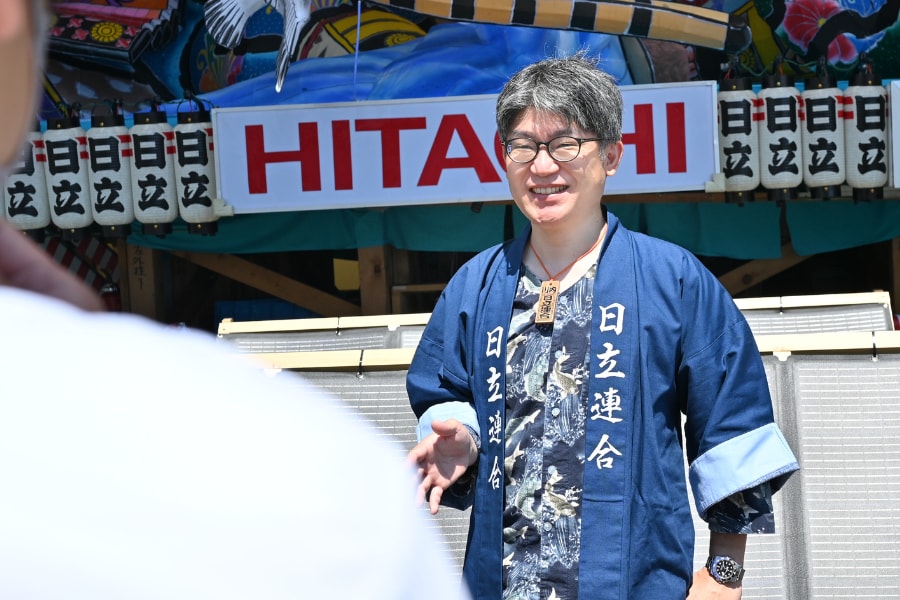
The Hitachi nebuta team has participated in the Aomori Nebuta Festival since 1965 representing Hitachi, Ltd. Hideaki Kawauchi, leader of the team, says, "In addition to working to reinvigorate the local community and enhance the brand value of the Hitachi Group, we are also working to carry on the traditions of this national important intangible folk cultural property.”
Lighting Up the Night in Aomori with Renewable Energy
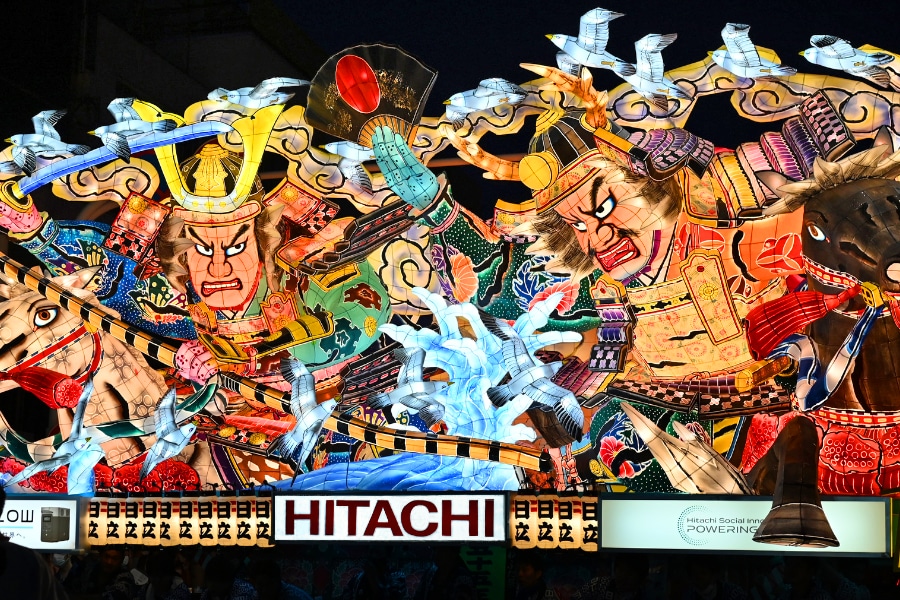
The theme of Hitachi’s float related to the Battle of Ichi-no-Tani, which occurred at the end of Japan's Heian period (794–1185). The float was created by nebuta master Mr. Renmei Kitamura, and it depicts the battle between Kumagai Jiro Naozane and other young warriors in a heroic manner.
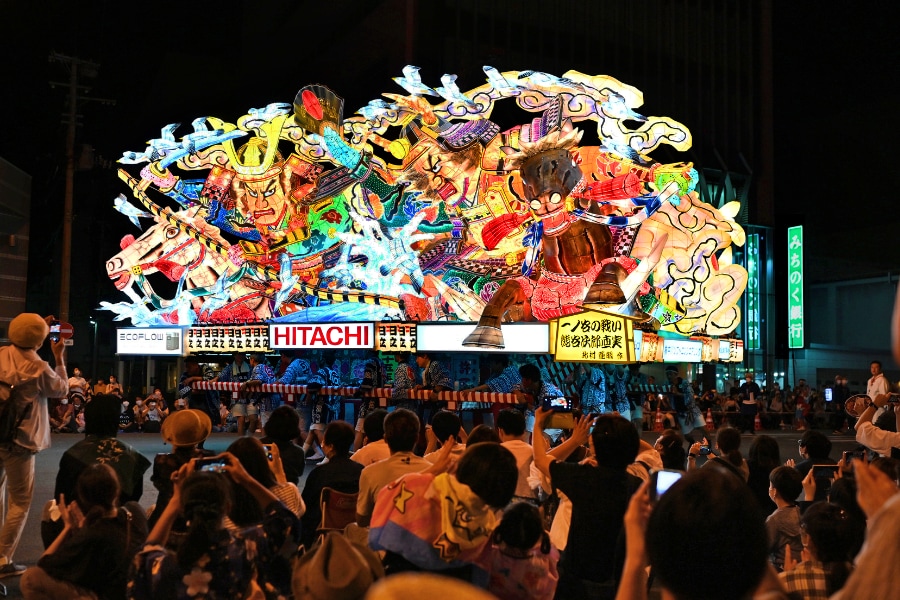
Hitachi's float colorfully lit up Aomori's summer nights. Kawauchi said, "This year, we challenged ourselves to do something no one has done before at the historic Aomori Nebuta Festival.”
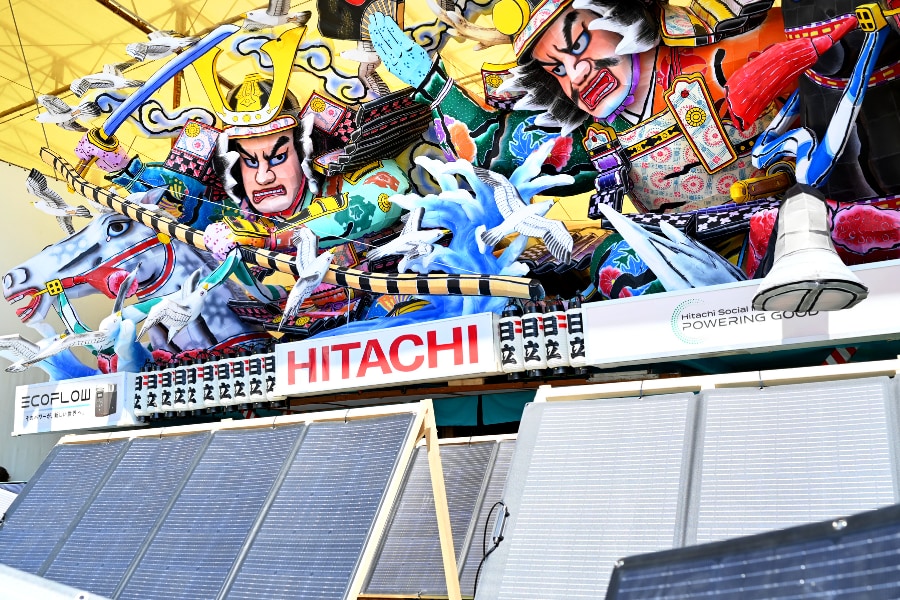
The lights on floats are usually powered by diesel generators that produce CO2. However, this year's float was equipped with batteries to light it, which were charged during the day using solar panels. This reduced carbon emissions by approximately 170 kilograms for the duration of the Aomori Nebuta Festival.
“We were able to light the float with clean energy by using renewable energy derived from solar power. We took on this challenge because we thought it was important for Hitachi to lead the contribution to reducing carbon emissions so that the Nebuta Festival, which attracts many tourists from both Japan and overseas, can be enjoyed for many years to come," said Kawauchi.
Contributing to the Development and Tradition of Floats
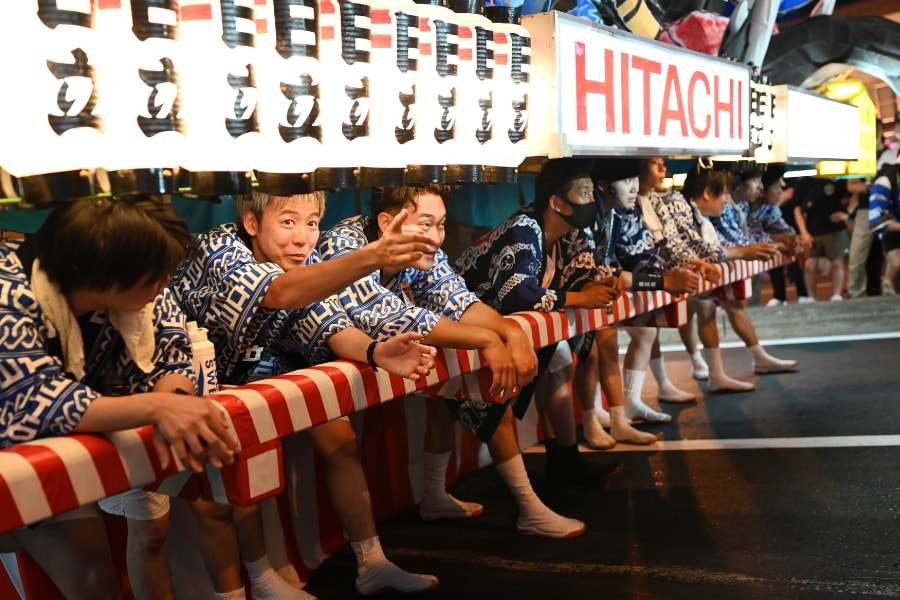
For about two years, Kawauchi has been considering the possibility of switching the power to light the float to renewable energy. He says that there were many difficulties involved in this challenge.
Kawauchi said: “People around us were concerned about whether we would be able to supply enough power for the 2,000 LED bulbs that light up the float for two and a half hours, along with what we would do if it caught fire. So we verified the safety and viability of the system through repeated lighting tests and by installing cooling fans. To be honest, we were moved at the moment we were able to light the bulbs for the first time.”
Hitachi's float overcame these difficulties to win the Tourism Convention Association Chairperson's Prize at an awards ceremony held on August 5.
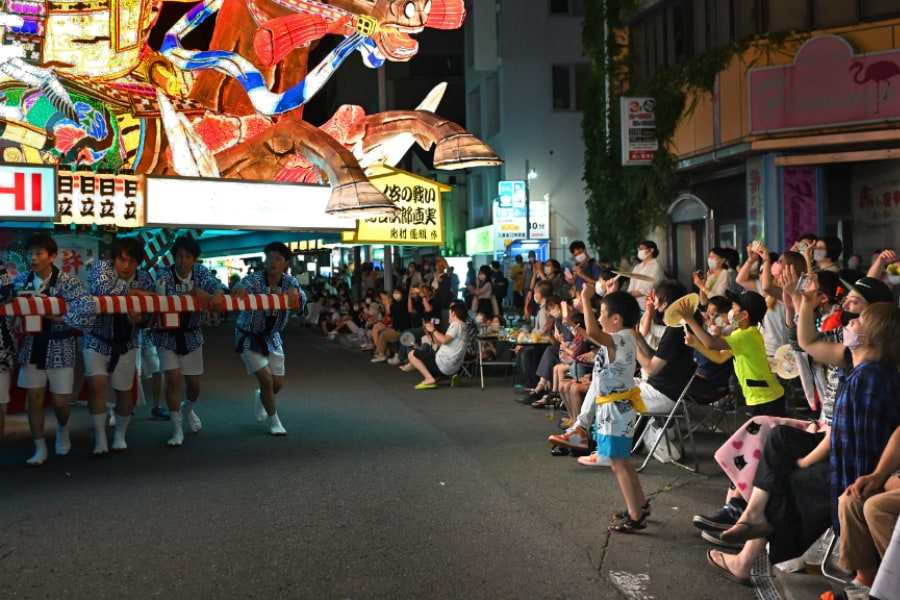
Hitachi's float illuminated the nebuta spirit and the hearts of the people while reducing impact on the environment. As for his future aspirations, Kawauchi says, "I will continue to contribute to the tradition and development of nebuta while aggressively working on what we can do to achieve Hitachi's goal of carbon neutrality.”



